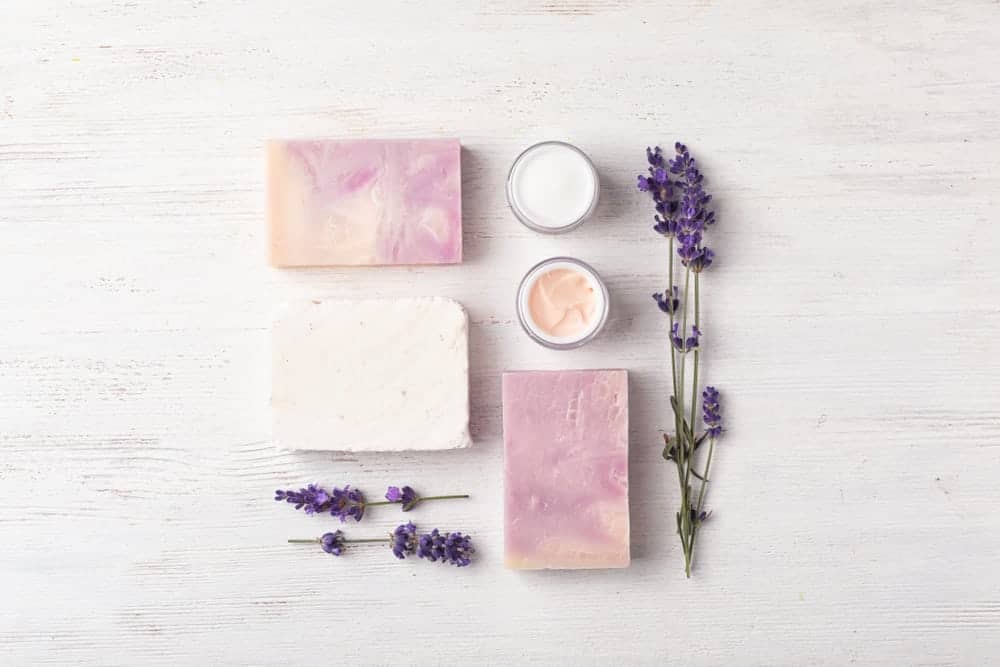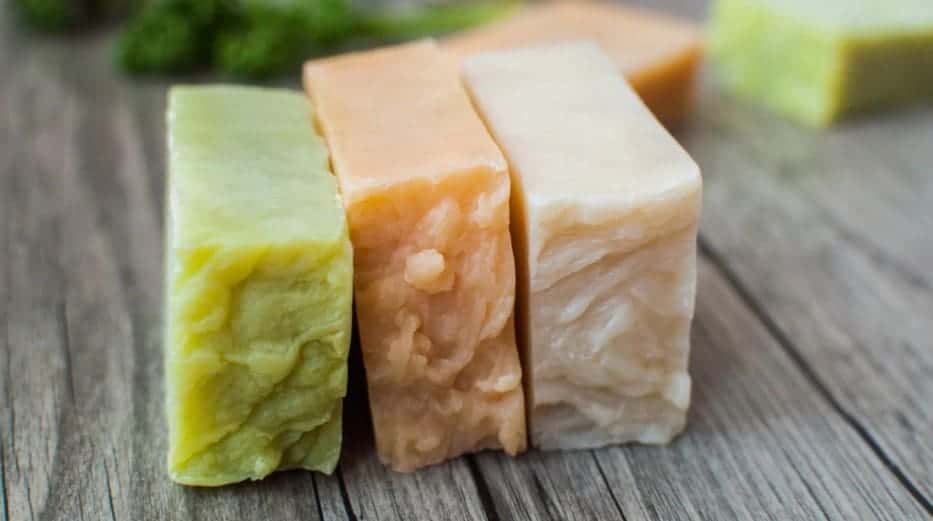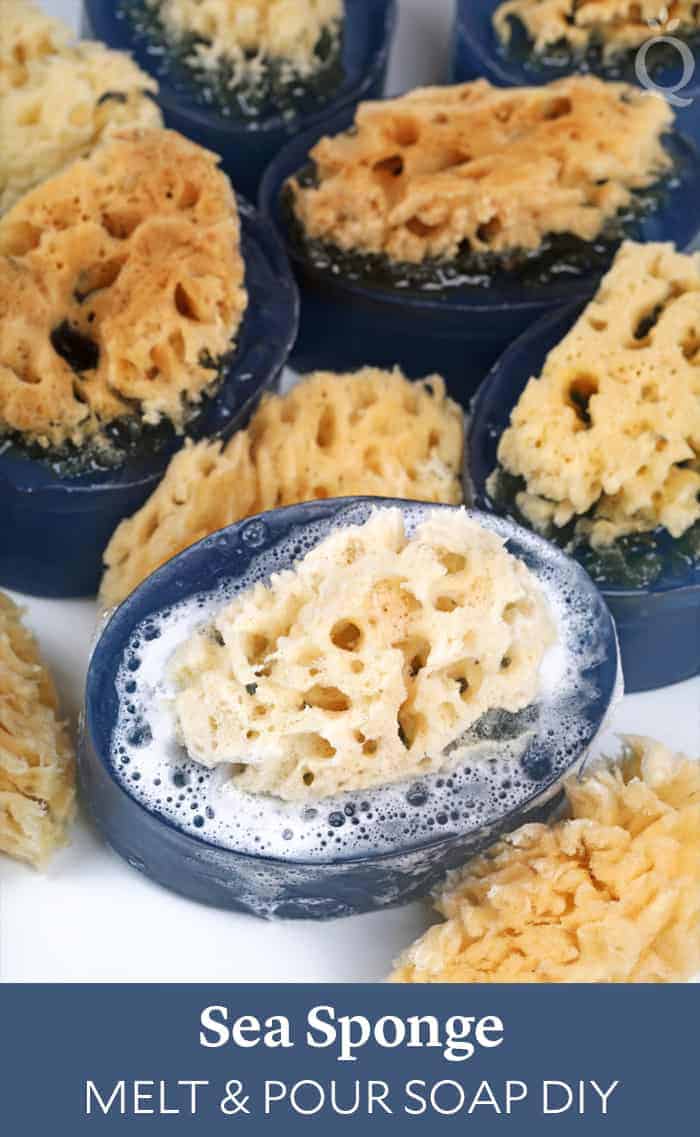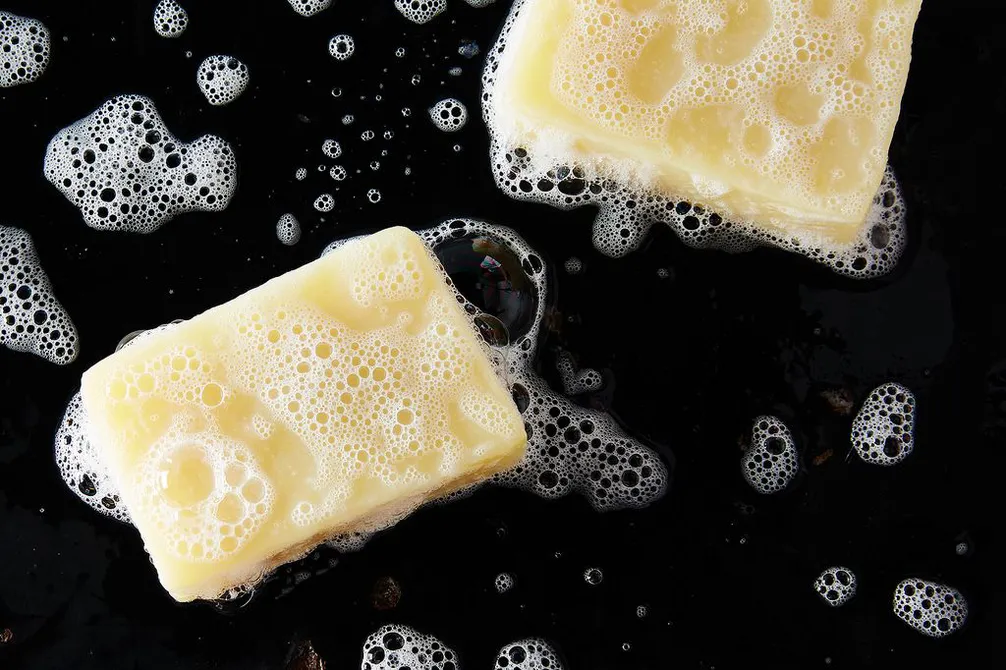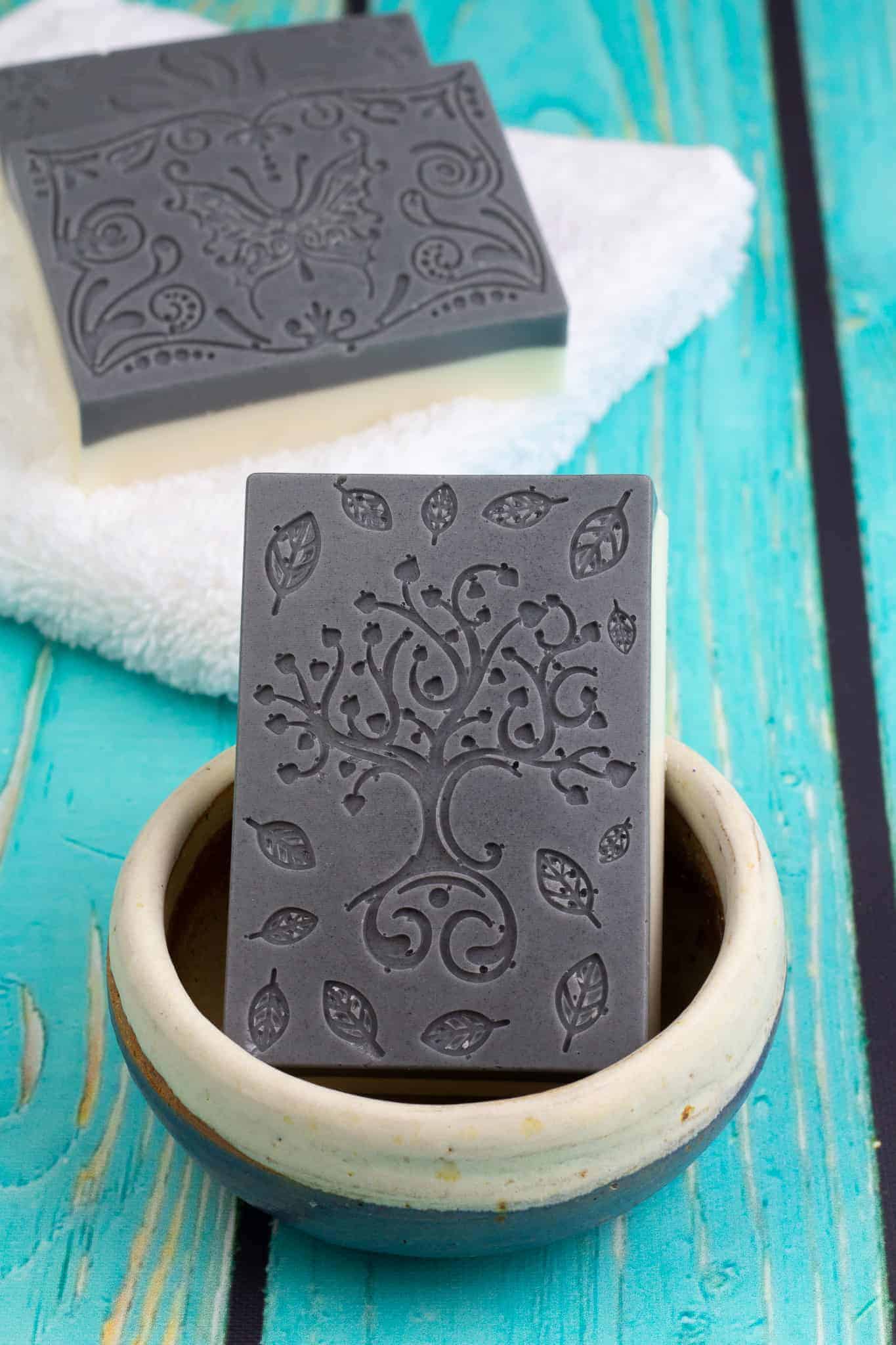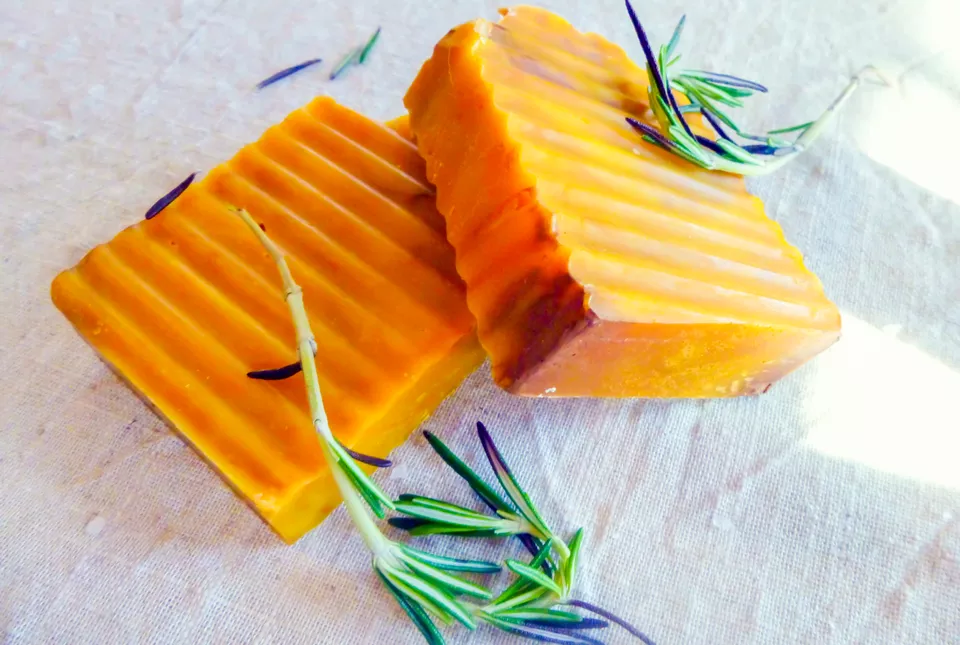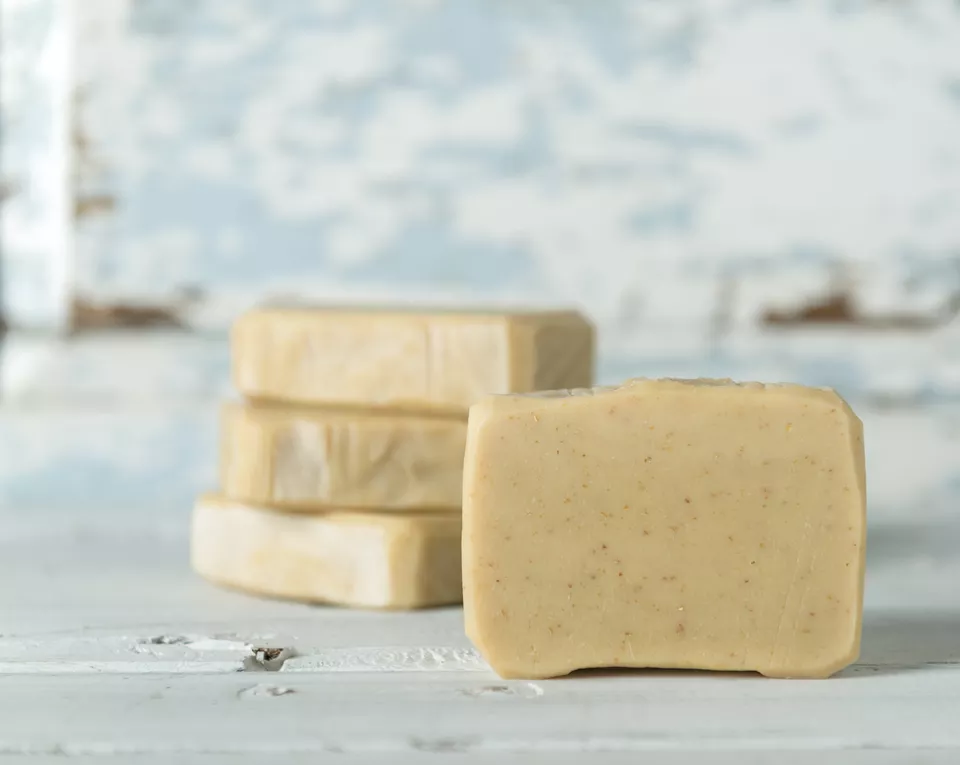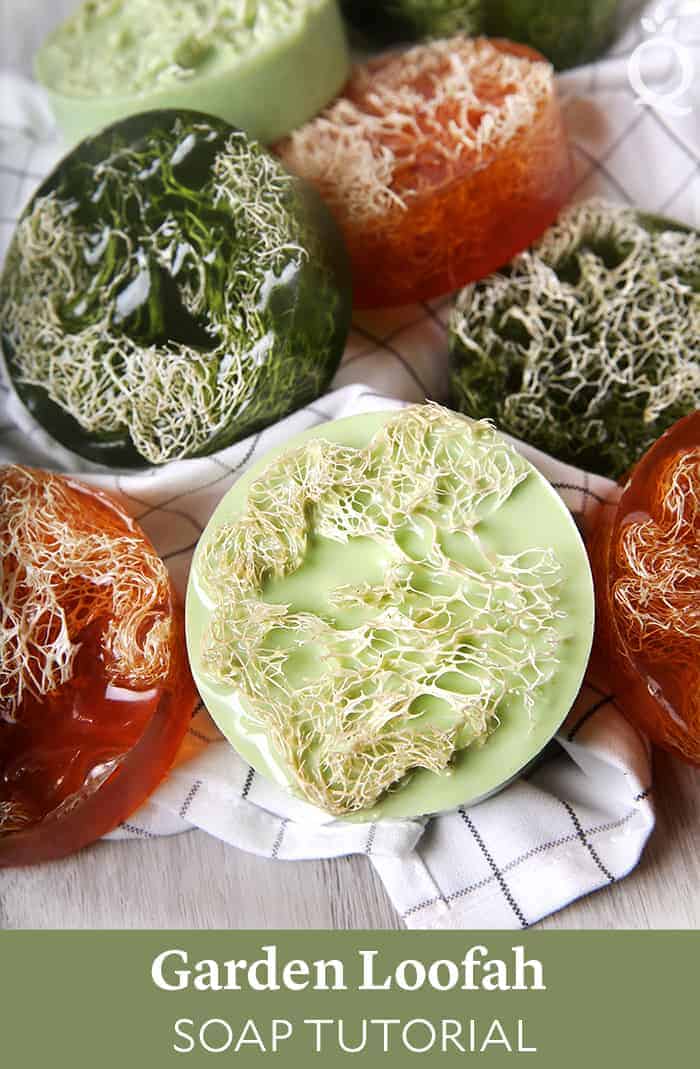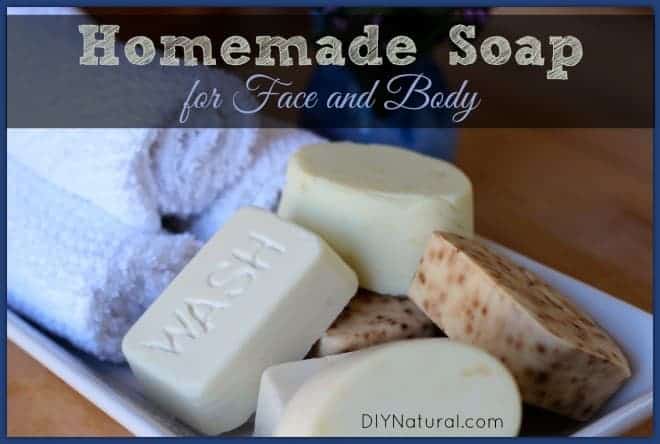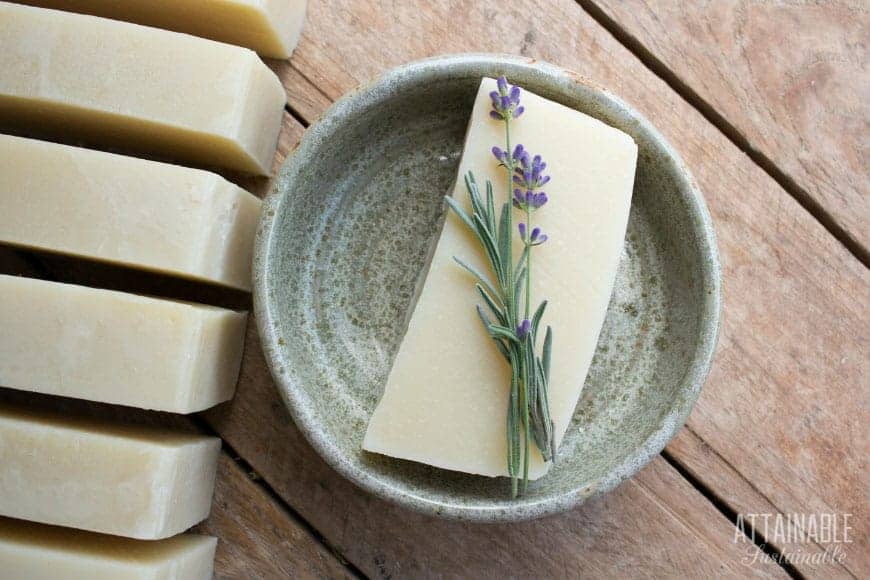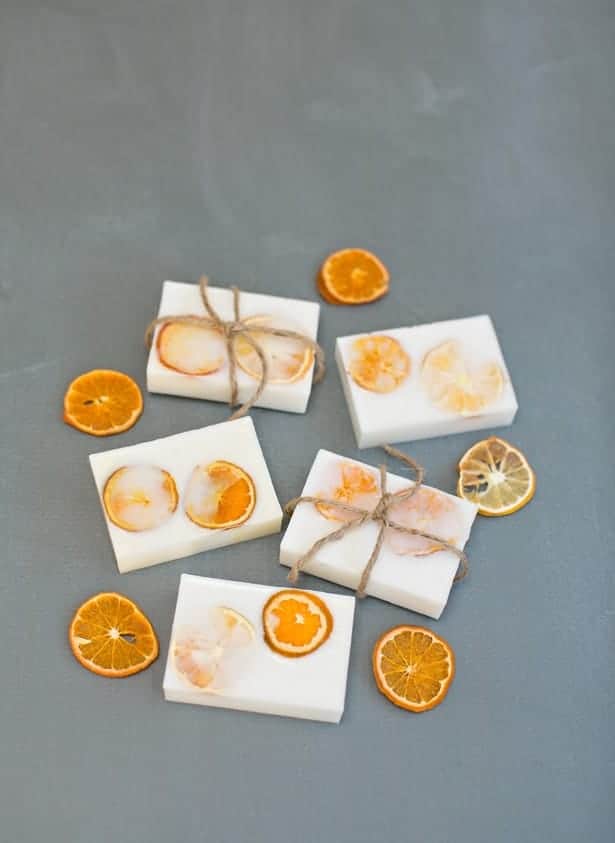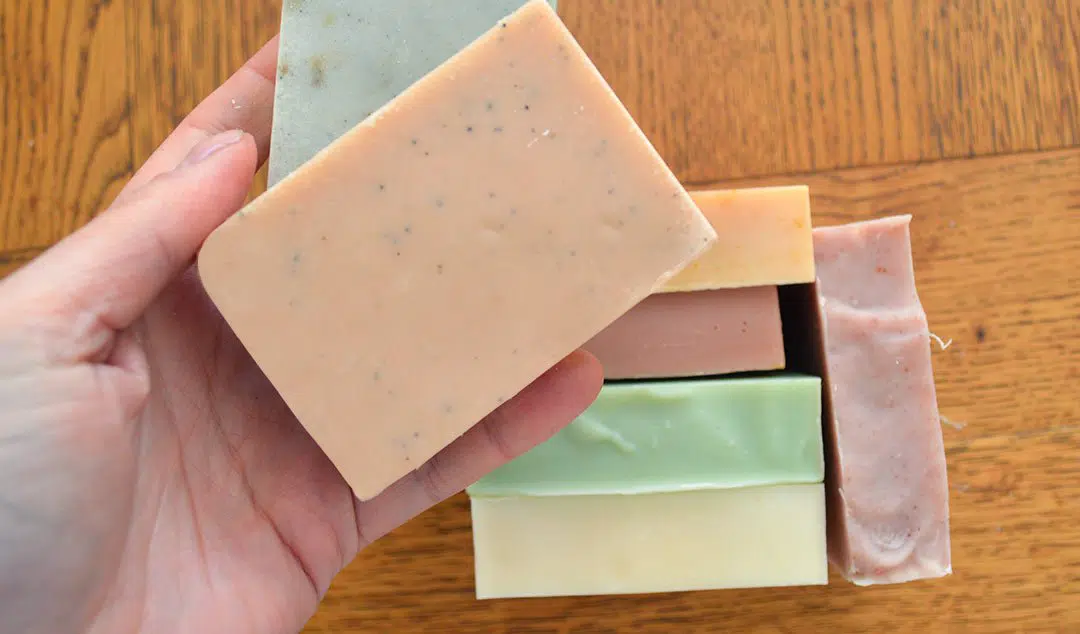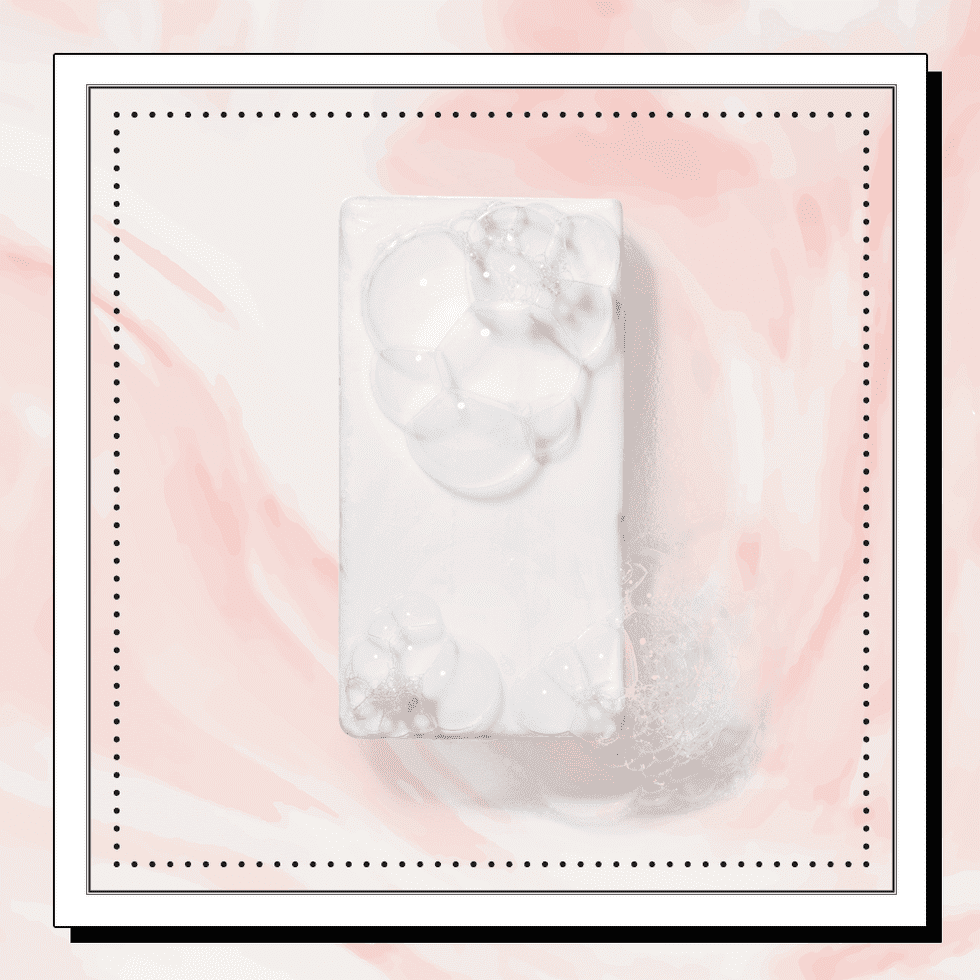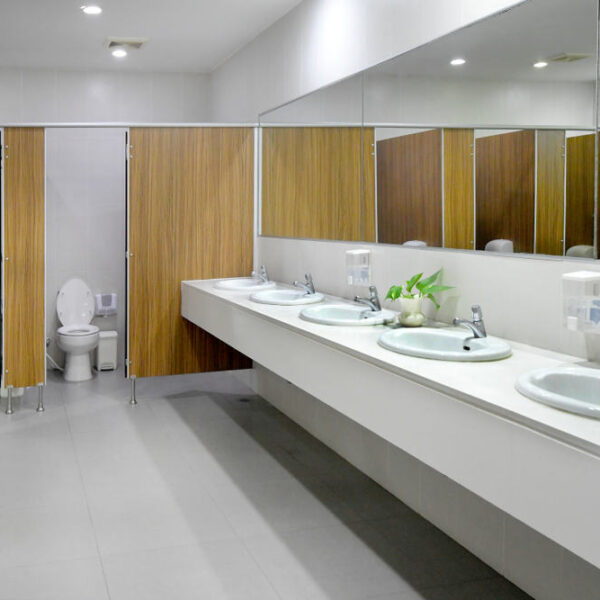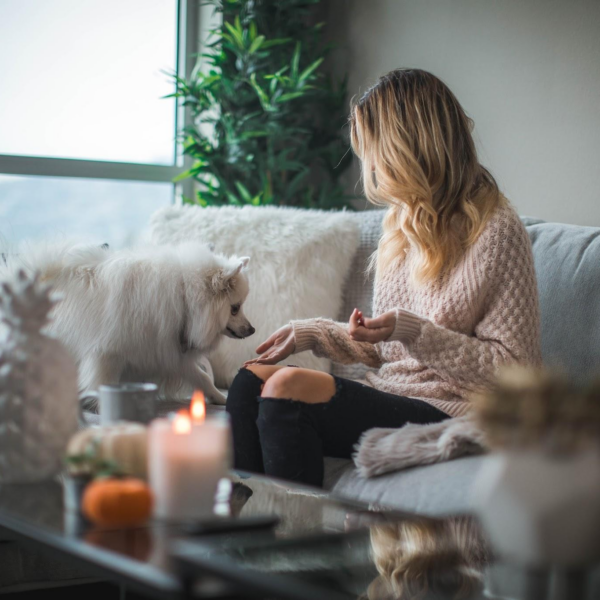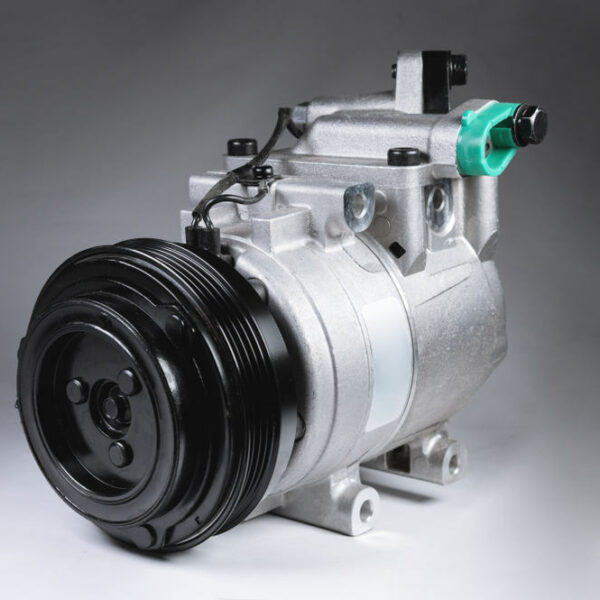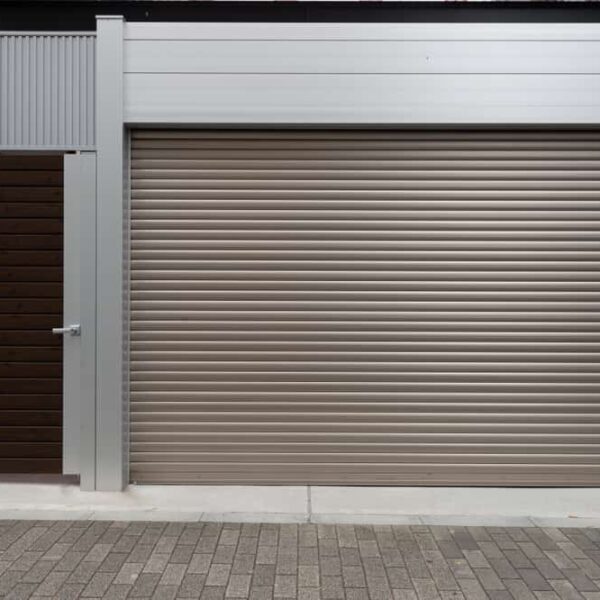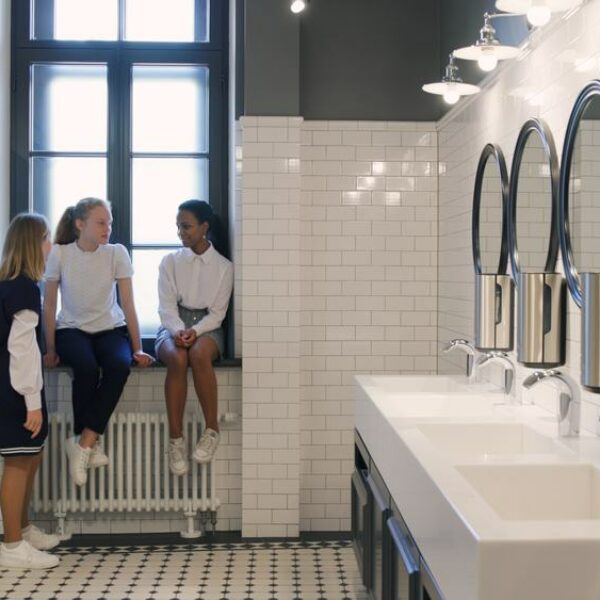Most of us have heard about the foot debate, but did you know some people believe you shouldn’t shower every day? It could be a crossover from the Middle Ages. Clean water was a luxury so people rarely took baths and many citizens drank beer instead of water.
These days, a lot of us are so invested in personal hygiene that we build businesses around it. The soap business is especially effective and is so lucrative that soap operas cashed in. These TV shows got their nickname because soap commercials dominated those premium ad slots.
And even today, home-based soap makers are common on social media. So whether you want to offer your pretty soap bars as gifts for friends and family, or whether you want to make a profit, here are some DIY bath soap recipes and ideas that you can play around with.
1. Kin’s DIY Bath Soap
At the store, there are hundreds of different products in the soap aisle, and it can get confusing. Making soap at home can be equally versatile, so here are four options to start you off. Try melt-and-pour bars in popsicle molds. Freeze the molds then add popsicle sticks.
For exfoliating soap, use opaque melt-and-pour soap with coffee grounds and essential oil. If you want mini soap, use smaller molds or cookie cutters. A spritz of rubbing alcohol stops bubbles from forming at the top of the mold. And for body, use castile soap, oil, and flavor.
2. Hot DIY Bar Soap with Lye
What exactly is soap? It’s a combination of an oil or fat base and an alkali. The alkali is often a hydroxide form of lye, which might be sodium for bar soaps or potassium for liquid soap. For DIY bath soaps, castile soap or glycerine-based melt-and-pour soap are common choices.
Use plastic, glass, or stainless steel tools, molds, and mixing bowls, since aluminum ones can corrode when exposed to lye. This particular recipe combines olive oil, coconut oil, lye, and distilled water in a slow cooker. Always add the water before the lye for safety reasons.
3. Balcony Aloe Vera Soap
You’ve probably spotted an aloe vera plant in your neighborhood, even though you may not have recognized it. So if you don’t grow your own, grab a few leaves from next door, scrape, and freeze them to make a DIY aloe vera gel. The gel takes the place of water, so mix the lye into the frozen gel then add oil and fragrance. Freezing keeps the gel from burning in the lye.
4. DIY Sea Sponge Soap
Melt-and-pour soap bases are pre-made, which means they’ve already gone through saponification and the lye is built-in. Castile soaps and liquid DIY bath soaps are the same – the body wash is ‘pre-saponified’. This recipe uses clear glycerine and Jagua Blue extract.
The aroma comes from Midnight Waters (vanilla, patchouli, bergamot, and seawater) and the soap is garnished with synthetic sea sponges made of wool. You could add seashells to the décor. The soap is molded in layers, with spritzes of isopropyl alcohol to prevent bubbles.
5. Whitening DIY Bath Soap
The skin-lightening industry is a big part of the cosmetic world. But rather than buying harsh commercial soaps, try these recipes to may a DIY bath soap that will safely turn you a few shades lighter. The soaps here all have a melt-and-pour soap, plant-based oil, and Vitamin E.
The Vitamin E oil is in capsule form, and the soaps have aloe vera gel with coconut, olive, or almond oil. One recipe has milk and potatoes. The second has tomatoes and sandalwood. Type three has orange peels while the fourth has a goat milk soap base and Vitamin C pills.
6. DIY Bath Soap for Dummies
If you failed chemistry, Option One for DIY bath soap is to use a melt-and-pour shortcut. Option Two is to try a simple recipe like this one. It’s a cold process, so although the lye gets extremely hot, you’ll need to cool it before it blends into the oils. Ideally, the two liquids should be about the same temperature before you mix them, so warm the oil if you must.
7. Swirly Coconut DIY Bath Soap
There are two main options when you’re making soap. You could do it from scratch using powdered or liquid lye. Or you could use castile soap or melt-and-pour soap as a base. Clear versions have a glycerine base while opaque ones have a base of goat milk or tallow or lard.
This recipe has a lye base of sodium hydroxide blended with coconut oil, superfat, pink kaolin clay (sometimes called rose clay), and hydrated clay. Coconut oil is naturally cleansing, but when it’s mixed with lye, it may dry out your skin. The superfat helps reduce that effect.
8. Manly Charcoal Vetiver Soap
To make DIY bath soaps with lye, you can go with the hot method – which is quicker and needs external heat or the slower cold process with internal heat. If you don’t want to use water, you can try tea, beer, coffee, coconut milk, or goat milk. You can try animal fats too.
Lard (pork fat) and tallow (beef fat) are popular options here, though any vegetable oil or fruit/nut butter will do. No petroleum oils though, they won’t allow saponification. This cold soap recipe uses lye, activated charcoal, and Vetiver essential oil with a Pringles can mold.
9. Honey Oat DIY Bath Soap
Melt-and-pour soaps don’t have to be simplistic. This gorgeous-smelling layered version mixes white and clear soap bases with honey and whole oats for a soothing bath. Honey softens your skin and reduces inflammation while oats are good for itchy skin, sunburn, acne, sores, and skin exfoliation. Both honey and oats have immense hydration properties.
10. Double Butter DIY Soap
It’s easier to use liquid oil for your DIY bath soap recipes. They blend well, leave less mess, and you can buy them cheap at dollar stores. But you may want some extra pizzazz in your soap, so fruit and nut butters can be helpful. This recipe uses multiple micas and lye flakes.
This soap is extra rich because, in addition to shea and cocoa butter, it infuses three carrier oils – coconut, olive, and castor oil. You should also add lard. This can be replaced with palm oil to keep your soap vegan and kosher. Add essential oils for fragrance and aromatherapy.
11. Crafty Gemini Cold Process Soap
Cold process soap does involve heat. The difference is that hot process soap is ‘cooked’ over direct heat while cold process soap relies on the heat generated from the chemical reaction. This DIY bath soap recipe combines 100% sodium hydroxide lye with olive oil and canola oil.
Ideally, do your soap work in the open air because (powdered) lye fumes can be toxic. And remember, lye burns so measure carefully and dissolve it completely in your chosen liquid. If your first attempt backfires, you could always upcycle that spoilt mixture aka rebatching.
12. Tea + Lemongrass Soap
For kids, DIY bath soap with edible fragrances are a risk – the kids will eat them! But for adults, a cookie-scented soap might bring back memories of grandma, which makes your bath so much more soothing. This particular soap is flavored with lemongrass and green tea plus a plethora of oils and butters including cocoa, palm, coconut, olive, castor, and soybean.
13. Three-Ingredient DIY Soap
For some of us, making DIY bath soap is a drawn-out therapeutic experience, so the more steps and ingredients the better. But some of us would rather work fast, so a shortcut is a blessing. This recipe is for the latter crowd and it only uses 3 ingredients – water, lye, and oil.
You need 100% lye, which could be a pack of caustic soda or a commercial drain cleaner. Check the box to be sure it’s 100% lye since some products have ‘infused lye’ in low volumes. This recipe uses olive oil and yes, you do need a scale to guarantee the right proportions.
14. DIY Loofah Bath Soap
What do you use to scrub your body in the shower? Most of us use fabric washcloths or plastic fluffy ones. You could also use organic loofahs, which come from plants. They’re great for cleansing and circulation so you can infuse them into your DIY bath soap for extra exfoliation.
For your loofah soap, you’ll need a melt-and-pour soap base. Try a white base if you want opaque pastel soap, or a clear base if you want glossy see-through soap. For color, dehydrated spinach and/or tomato powder are perfect. Avocado oil leaves a pleasant scent.
15. Artsy DIY Soap
In case you’re looking for something fancy, here’s a recipe that shows you how to make art with your DIY bath soap. The sample shows a landscape, but with a little creativity and a lot of Googling, you can jerry-rig anything from an album cover to a family portrait. You could use color and texture to create the different images, and layer your soap for extra effect.
16. DIY Oil Blend Bath Soap
For soap to be effective, you need fats or oil to loosen and lift the dirt so that the lye can wash it off. The lipids also help soothe and hydrate your skin. So the kinds of oil you use in your DIY bath soap do make a difference in how effective it is. This one has 3 oils for added benefits.
Unrefined coconut oil is cleansing and forms amazing lather. Olive oil hardens the bar so it lasts longer in humid bathroom conditions. And while the recipe uses almond oil, you can try safflower, sunflower, grapeseed, or any edible oil that remains liquid at room temperature.
17. Holly’s DIY Charcoal Soap
Activated charcoal is a popular cleansing product with detoxifying benefits. Doctors mainly use it as an antidote for poisoning or overdoses – it soaks up the toxins in your tummy. In DIY bath soap, charcoal tightens pores, treats acne, reduces wrinkles, and absorbs excess oil.
This charcoal soap is blended with white kaolin clay, lye, carrier oils (coconut, olive, castor, avocado), essential oils (rosemary, peppermint), cocoa butter, and either lard or shea butter if you’re vegan or kosher. Set the soap in a cool pre-heated oven with the power button off.
18. Lard Lye Soap
Animal fats (like lard and tallow) are commonly used in DIY bath soap, but if your lifestyle is against animal products, you can replace them with creamy butters like mango, kokum, shea, or cocoa. If you substitute the lard, you’ll need more oil. This lye soap has lard, oils (coconut, olive) plus optional ingredients like powdered milk or colloidal oats that soothe your skin.
19. DIY Aloe Vera Bath Soap
Aloe Vera is an important healing and moisturizing product. In gel form, can soothe sore, chapped, inflamed, or sunburnt skin, and can be useful against wrinkling and acne. When you blend it into your soap, it boosts cell growth, keeping your skin young, fresh, and supple.
Because aloe vera has antiseptic properties, it’s the perfect soap additive. Use melt-and-pour glycerine soap with raw aloe vera gel and olive, almond, or coconut oil plus a Vitamin E capsule. To make the gel, scrape and mash aloe leaves with a stone or grind in a blender.
20. DIY Goat Milk Citrus Soap
Although goat milk has a lower lactose level than cow milk, it has higher fat content, so it’s a popular ingredient for homemade beauty products. White melt-and-pour soap bases often contain goat milk or buttermilk. This recipe uses a goat milk base with citrus essential oils.
Add dried citrus slices to the soap mixture. Use whatever you have on hand – lemon, lime, grapefruit, even strawberries. They’ll garnish your soap, layer your scent, and offer extra exfoliation. It’s a fun project you can do with kids, and it just might trick them into the tub!
21. DIY Cucumber Bath Soap
You’ve seen those spa videos that have someone in a bathtub with cucumber slices over their eyes. It’s because cucumbers have a high water content so they hydrate eye-bags and reduce puffiness. They’re great for DIY bath soap too. Grate the cucumbers and strain them, freeze the juice, add lye, parsley powder, charcoal powder, avocado oil, coconut oil, and shea butter.
22. Lovely Greens DIY Bath Soap
If you’re making DIY bath soap as a party favor, you may want variation. These three lye soap recipes all have solid oils for lather (coconut, palm, sea butter) plus liquid oils (olive, castor, sunflower) as a carrier. Essential oil blends are optional – try peppermint, lavender, or rosemary. To garnish your soap, you could use colored clay, dried flowers, or dried herbs.
23. Super Easy Beginner Soap
This Three Little Goats soap is as simple as it gets. It only has three ingredients – olive oil, distilled water, and powdered lye. Be careful – lye heats up sneakily fast. And even when it’s cold, lye can be corrosive so have some vinegar nearby in a spray bottle in case of any burns.
Spray the vinegar directly on the burn to dilute and soothe it, since water will have no effect. Lye has a strong smell though, even though it will fully dissolve. So essential oils or fragrance oils are optional, but use them with care since they can disrupt the saponification process.
24. Simple Soap with Essential Oils
When you use melt-and-pour soap for your DIY bath soap, you don’t need to add any carrier oils. You’ll just melt the soap in a microwave or set up your saucepans to form a double boiler system. You can add color – preferably soap coloring that doesn’t stain your skin or tub.
Essential oil can be a useful additive too. It scents your soap with pleasing perfumes, and some of these oils offer aromatherapy in the process. If you’re not sure what oil to use, try lavender for relaxation, rosehip for healing, tea tree for wounds, or jasmine for low moods.
25. DIY Kid-Friendly Soap Recipe
Lots of kids hate baths (and apparently, adults too!). But this technique is unlikely to work on your spouse, roping children into your soap-making activities might motivate them to wash themselves more often. Each child gets their own DIY bath soap with their name on it.
And since the children will make the soap themselves (supervised, of course), bath time will probably be much more fun and way less stressful. You might even find them cleaning their walls or washing their toys as an excuse to use their new sudsy soap bars. Everybody wins!
What’s your favorite DIY bath soap recipe? Show us how you make it in the comments!
